Production Mopeds
Raleigh’s first moped was introduced in 1958 with an engine designed by Vincento Piatti—the designer of the Mini-Motor. Raleigh became part of the Tube Investments group of companies in 1960; this brought the Raleigh, Norman, Phillips and Hercules brands of moped under the same ownership. The obvious course of action was to rationalise these four ranges into one common series. It was decided to license the Mobylette range of mopeds produced by Motobécane in France. A ‘stop gap’ based on the Sachs-engined Nippy already being produced by Norman was sold in Ireland until the Mobylette-based models could be sold there. From then on, Raleigh, Phillips and Norman mopeds were effectively Mobylettes with different badges. The main exception to this was the Wisp, which, although it used Mobylette running gear, had an in-house frame. This frame was based on Raleigh’s RSW16 bicycle and was an attempt to take advantage of the small-wheel boom being enjoyed in the cycle industry as a result of the success of the Moulton bicycle. A few prototypes that never went into production are listed at the end of the page. Production of Raleigh mopeds ceased in 1971.
RM1 Moped
Introduced October 1958
Discontinued December 1959

Lady’s bicycle style frame, Sturmey–Archer engine, ‘fixed’ engine (no clutch), 6½ pint fuel tank, 26×2 wheels & tyres, colour: grey, drum brakes
RM1C Moped
Introduced May 1959
Discontinued December 1959
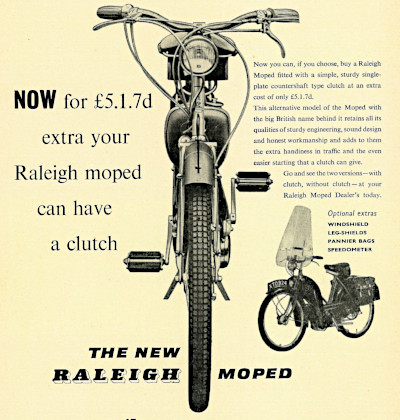
As RM1 but with the addition of a manual clutch and coupled brakes. Clutch kit also available to convert RM1 to RM1C.
RM2C Moped MkII
Introduced January 1960
Discontinued October 1960
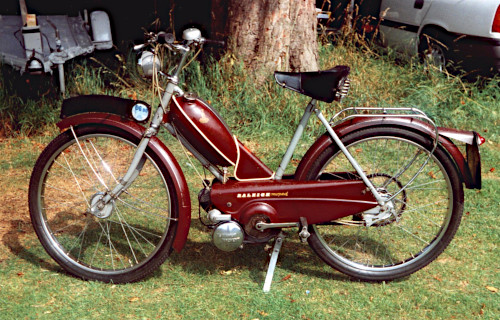
Similar to RM1C but with one gallon fuel tank and lower gear ratio, grey frame, maroon tank and engine covers.
RM3
Prototype only
Raleigh did not produce an RM3 but there was a prototype that looked much like an updated RM2.
RM4 Automatic
Following the merger of Raleigh and TI, it was decided to produce an entirely new range of mopeds rather than continue any of the existing ranges.
Announced November 1960
In production February 1961
Discontinued February 1964
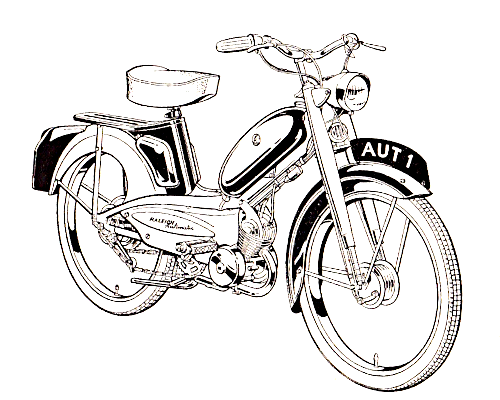
Same frame and engine as the Mobylette—built under licence from Motobécane in France. Single-speed, automatic clutch, rigid frame, telescopic front forks, drum brakes. Charcoal Grey & Pearl Grey.
RM5 Supermatic
Announced November 1960
In production February 1961
Discontinued September 1969

Same frame and engine as the Mobylette—built under licence from Motobécane in France. Variable-speed, automatic clutch, leading-link forks, swinging arm, drum brakes, dual seat. Charcoal Grey & Pearl Grey
-
June 1965: Telescopic front forks fitted. Fire Red & Pearl Grey.
September 1965: Legshields fitted as standard equipment
December 1965: Fire red & Pearl Grey or Neptune Blue & Pearl Grey
Super
Not really a Raleigh at all, the Super was a Norman Nippy with a Sachs engine made for Raleigh (Ireland) Ltd because Raleigh’s initial agreement with Motobécane did not allow the RM4 & RM5 to be exported to Ireland. Sales of the RM4 & RM5 were permitted from November 1961 but the Super remained on sale until the end of 1962 to clear the stock of frames.
1961–62
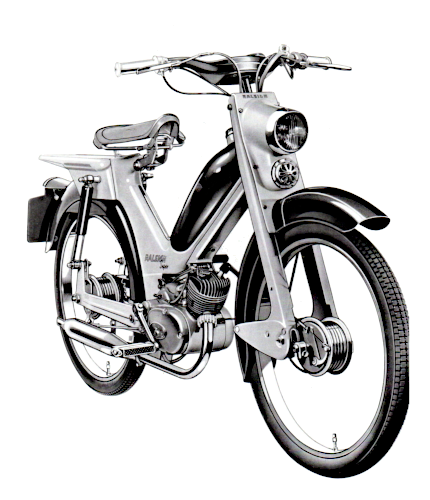
Sachs-engined moped based on the frame pressings used by the Norman Nippy.
RM6 Runabout
Introduced May 1963
Discontinued February 1971
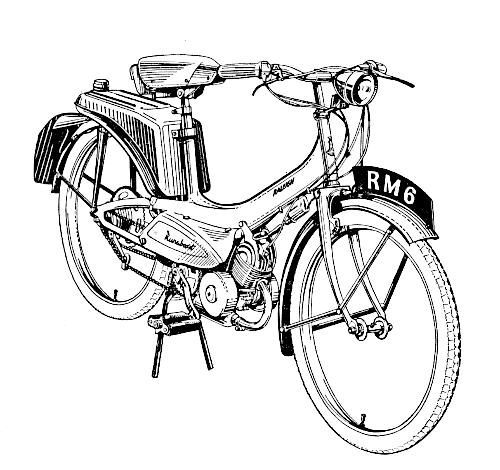
Similar to RM4 but with cycle-type forks (unsprung) and calliper front brake. Fuel tank mounted over rear wheel. Raleigh Green & Pearl Grey
-
June 1965: Raleigh Green & Pearl Grey, or Neptune Blue (single colour).
November 1965: Specification changed to that of the Runabout de Luxe.
January 1965: Neptune Blue (single colour).
January 1967: Royal Blue (single colour).
RM6 Runabout de luxe
Introduced July 1965
Discontinued November 1965
More powerful engine that the standard RM6. Royal Carmine (single colour).
RM6 Runabout Super de luxe
Introduced November 1965
Discontinued September 1969
Same as Runabout de Luxe but with legshields fitted as standard equipment. Royal Carmine (single colour).
RM6 Runabout Pop
Introduced October 1966
Discontinued February 1967
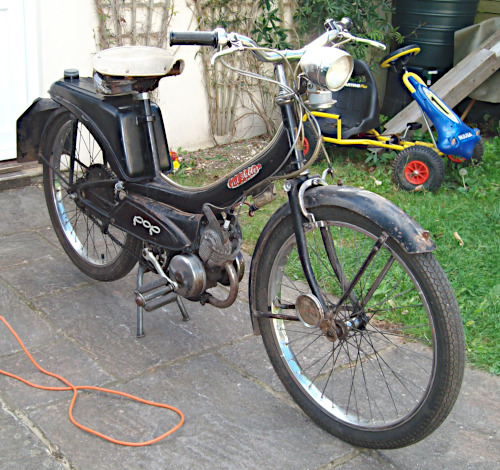
Cheaper version of Runabout—finished in black.
RM7 Wisp
Introduced April 1967
Discontinued September 1969
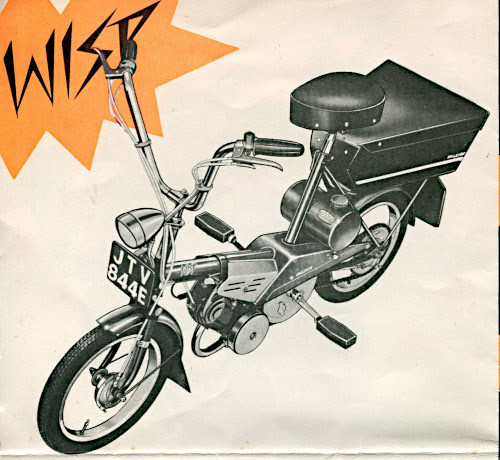
Small-wheel (16×2) ‘shopper bike’ style moped based on the Raleigh RSW16 bicycle frame. Initially was to be called the ‘R16 Powerride’ but re-named ‘Wisp’ for production. Single speed, finished in Fiesta Blue or Spanish Gold.
RM8 Automatic MkII
Announced December 1963
In production March 1964
Discontinued September 1969
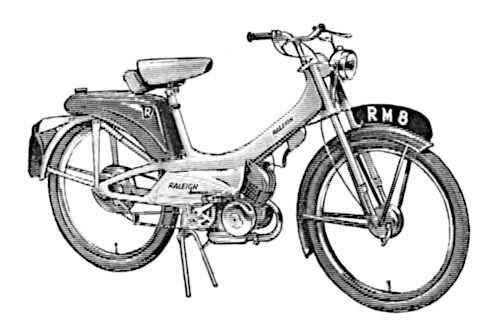
Similar to RM6 but with more powerful engine, telescopic front forks and drum brakes front and rear. Charcoal Grey & Pearl Grey
-
June 1965: Charcoal Grey & Pearl Grey, or Royal Blue & Pearl Grey.
January 1966: Royal Blue & Pearl Grey.
RM9 Ultramatic
Introduced April 1964
Discontinued September 1969
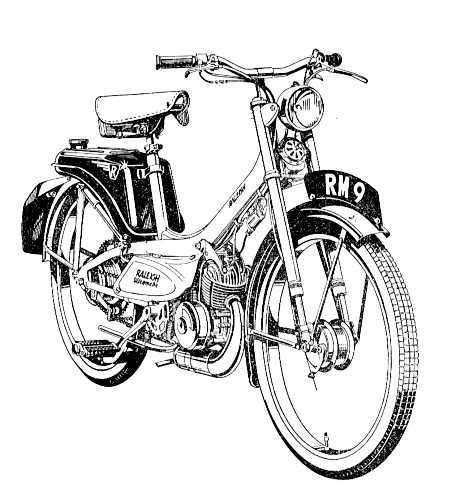
Similar to RM8 but with automatic variable speed transmission. Fire Red & Pearl Grey.
-
November 1965: Golden Sand.
February 1968: Calypso Coffee & Pearl Grey (offered for a few months only), or Royal Carmine (single colour).
RM9+1 Ultramatic plus One
Introduced November 1966
Discontinued September 1969
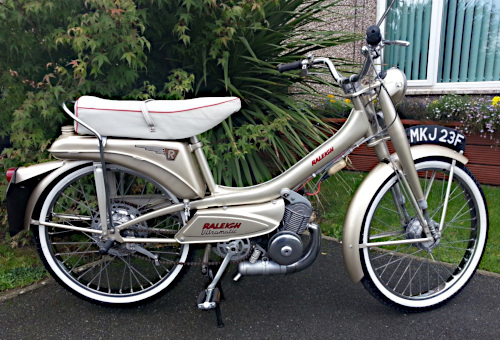
Same as the Ultramatic but with dual-seat, pillion foot rests and stronger rear wheel. Golden Sand.
-
February 1968: Calypso Coffee & Pearl Grey (offered for a few months only), or Royal Carmine (single colour).
RM10 Autocrat
Prototype only
A bit like a De Luxe version of the Wisp with two-tone bodywork.
RM11 Super Tourist
Introduced January 1966
Discontinued July 1967
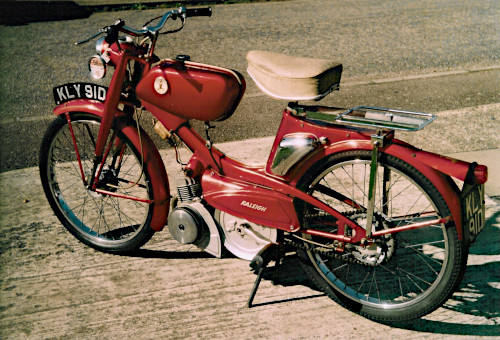
Touring moped—similar to Supermatic, rigid frame, telescopic forks, motor cycle style fuel tank. Royal Carmine.
RM12 Super 50
Introduced June 1965
Discontinued July 1967
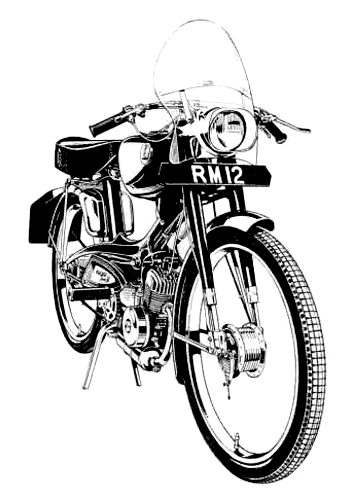
Sports moped—similar to Supermatic, rigid frame, telescopic forks, motor cycle style fuel tank. Black & Neptune Blue.
-
1966: Pearl Grey with Fire Red trim.
Prototypes
RM3
Prototype only
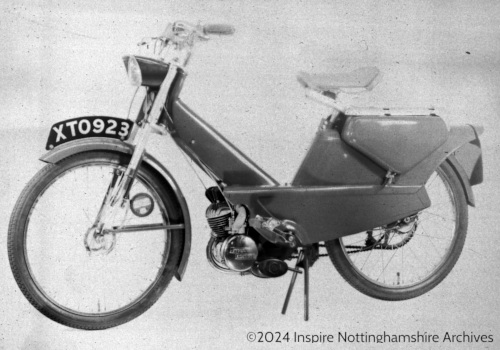
Raleigh did not produce an RM3 but there was a prototype that looked much like an updated RM2. It had smaller wheels, telescopic forks, and more enclosing bodywork. It used an updated version of the Sturmey–Archer engine that had the magneto moved to the right-hand side and an automatic powder clutch on the left. The merger with TI and the subsequent agreement with Motobécane brought an end to the project.
RM7 R16 Poweride
Prototype only, 1966
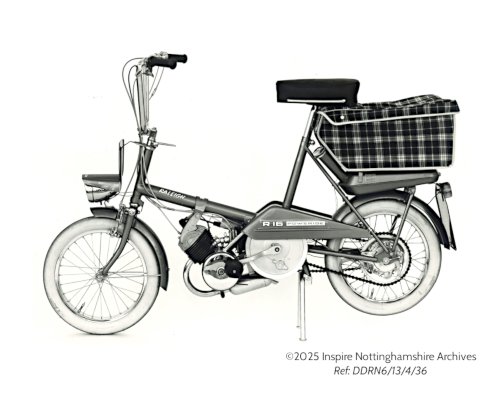
Small-wheel (16×2) ‘shopper bike’ style moped based on the Raleigh RSW16 bicycle frame. Became the ‘Wisp’ for production. Single speed, finish unknown though likely to be the same Raleigh green as the RSW16.
RM10 Autocrat
Prototype only
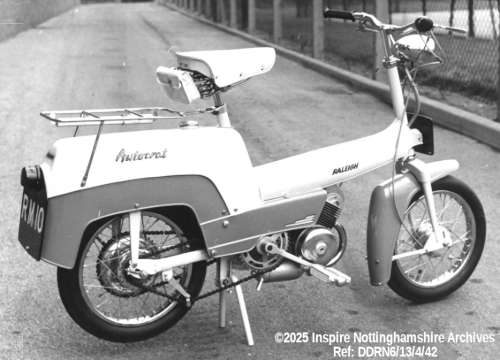
Probably intended as a more up-market companion to the Wisp.
Wisp MkII
Mock-up only
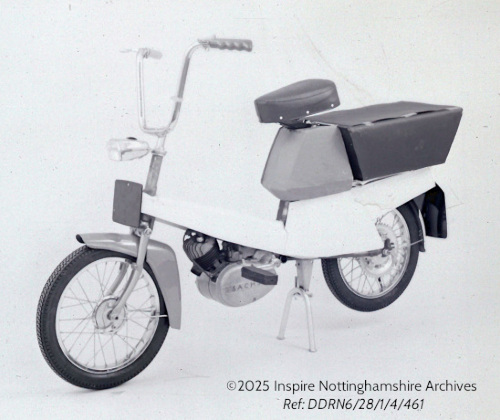
Mock-up for an update of the Wisp—did not progress far enough to get an ‘RM’ number.
